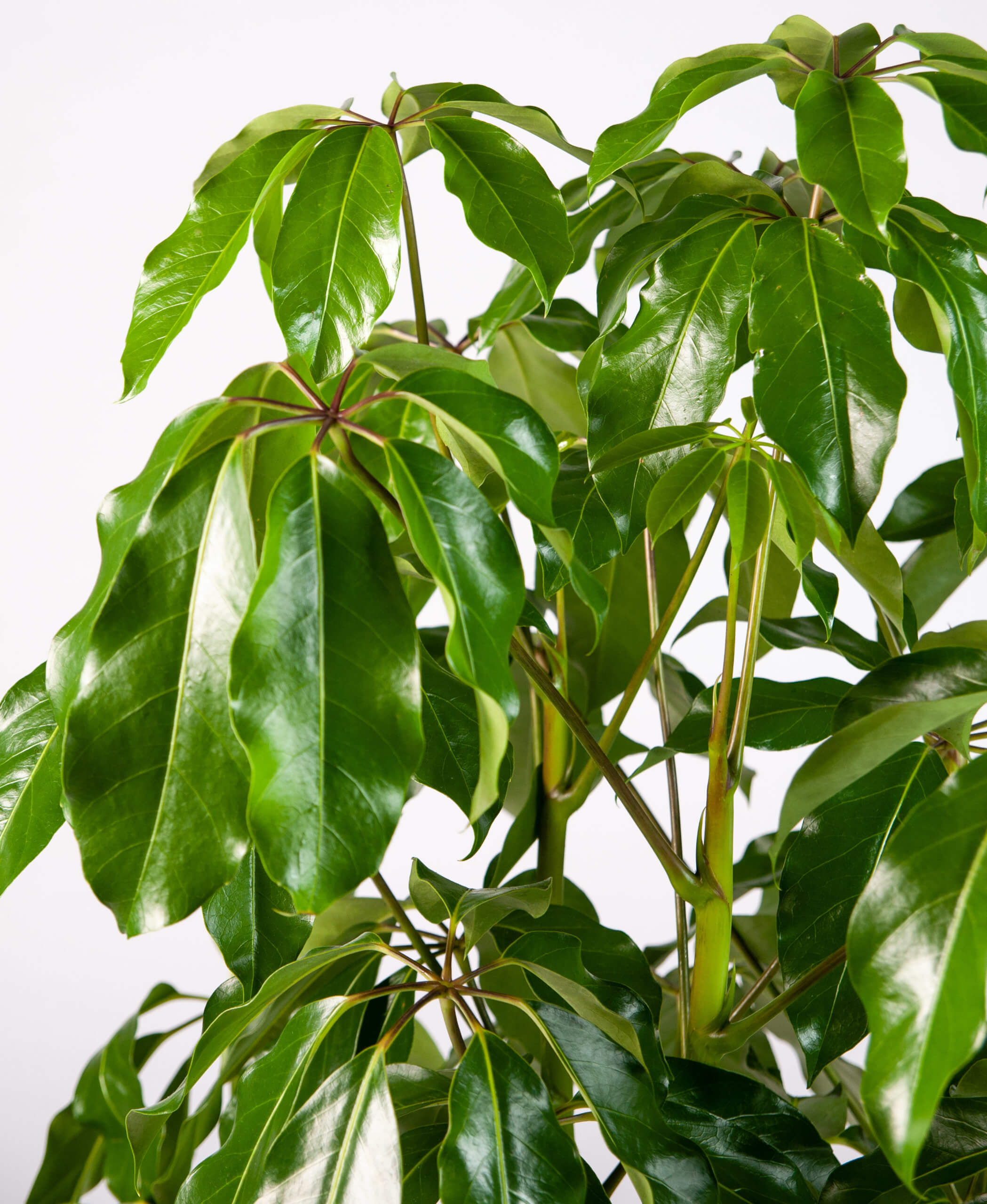As someone who’s been growing umbrella trees (Schefflera arboricola) for over 5 years, I’ve dealt with my fair share of yellowing leaves. It’s a common problem that can really worry plant parents, but don’t stress! I’m gonna break down everything I’ve learned about why this happens and how to fix it
The Main Culprits Behind Those Yellow Leaves
1. Lighting Issues
From my experience, these guys are pretty picky about their light. They need:
- Bright indirect sunlight
- Protection from harsh afternoon sun
- At least 6 hours of filtered light daily
I learned this the hard way when I placed my umbrella tree right next to a south-facing window. Within weeks, the leaves started turning yellow! Moving it a few feet back from the window solved the problem.
2. Water Problems (The Most Common Issue!)
Overwatering
This is the #1 mistake I see people make. Here’s how to tell if you’re overwatering:
- Soil feels constantly wet
- Yellow leaves with mushy stems
- Root rot smell (kinda like rotten eggs)
Underwatering
On the flip side, these signs show your plant’s thirsty:
- Crispy yellow leaves
- Dry soil more than 1 inch deep
- Leaf drop with firm stems
Pro tip: I stick my finger about an inch into the soil – if it’s dry at that depth, it’s watering time!
3. Nutrient Deficiencies
Your umbrella tree might be hungry if you see
- Yellowing between leaf veins
- Older leaves turning yellow first
- Stunted growth
I feed mine with a balanced fertilizer (20-20-20) every 2-3 months during growing season.
My Tried-and-True Solutions
-
Fix the Light
- Move plant to brighter spot (but not direct sun)
- Use sheer curtains to filter harsh light
- Rotate plant monthly for even growth
-
Perfect Your Watering Game
- Water when top inch of soil is dry
- Use well-draining potting mix
- Empty drainage tray after watering
-
Feed Your Plant
- Apply balanced fertilizer during growing season
- Use liquid kelp for stressed plants
- Add Epsom salts for magnesium deficiency
Prevention Tips I’ve Learned
Listen, preventing yellow leaves is way easier than fixing them. Here’s what works for me:
-
Regular Check-ups
- Inspect leaves weekly
- Check soil moisture before watering
- Look for pest signs (webbing, spots)
-
Environmental Control
- Keep temps between 60-85°F
- Avoid cold drafts
- Maintain humidity around 50%
-
Seasonal Care
- Reduce watering in winter
- Adjust fertilizer schedule
- Move plant away from AC/heaters
When to Worry (And When Not To)
Don’t panic if:
- Lower, older leaves yellow and drop (natural aging)
- A few leaves yellow after repotting (transplant stress)
- Slight yellowing in winter (normal dormancy)
Do take action if:
- Many leaves yellow suddenly
- Yellow leaves have brown spots
- Plant shows signs of pest infestation
Final Thoughts
Remember, umbrella trees are pretty resilient. I’ve brought mine back from some pretty rough spots! The key is catching problems early and being consistent with care. If you’re still having trouble, try taking a pic and joining some plant groups – the community’s always happy to help diagnose specific issues.
Keep in mind that every plant is different, and what works for my umbrella tree might need tweaking for yours. Just pay attention to your plant’s signals, and you’ll get the hang of it!
Would you like me to explain any part in more detail? Drop a comment below and I’ll help you out!

The leaves on your Schefflera could be turning yellow for a number of reasons, but don’t fret! We’ll get to the bottom of this.

Moisture
Your humidity level
Improper Light
Generally, Scheffleras will thrive when placed in medium to bright indirect sunlight. When exposed to direct sunlight for too long, the foliage will burn. While Scheffleras can adapt to low light areas, their growth will slow. Too little light can result in yellowing leaves. Take note of the light your Schefflera is receiving and move accordingly.
Pests
Weakened or stressed Scheffleras become more susceptible to insect infestations. Sap-sucking bugs like spider mites can drain your plant of moisture. This problem quickly manifests itself by yellowing leaflets and fronds. Scale, mealybugs, and spider mites occur frequently in indoor conditions. If not killed early on, these small pests proliferate and move all along frond parts into nooks and crannies. The piercing mouths of the insects exhaust your plant and accelerate yellowing, especially if your Schefflera is already unhealthy from poor lighting, a nutrient deficiency or improper soil moisture.
Some yellowing is natural
Is your Schefflera pushing out new growth? If there is new growth on your plant and the yellowing leaves are older, particularly at the bottom of the plant, this yellowing is natural. Your plant sheds its old leaves and sends energy to new growth.
4 Reasons the Dwarf Umbrella Plant is Dropping Leaves?
0
